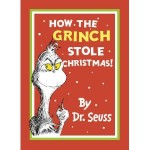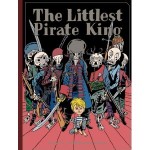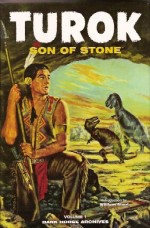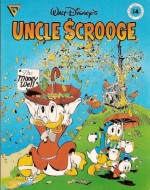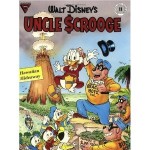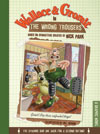In keeping with my own self-created Christmas tradition here’s another selection of British Annuals that contributed to making me what I am today, selected not just for nostalgia’s sake but because they are still eminently palatable and worthy of your attention, even under here in the disconcertingly futurist 21st Century.
After decades when only American comics and nostalgia items were considered collectable, recent years have seen a resurgence of interest in home grown product. If you’re lucky enough to stumble across a vintage volume, I hope my words can convince you to acquire it. However, if I can also create a groundswell of publishers’ attention, maybe a lot of magical material out there in print limbo will resurface in affordable new collections…
Great writing and art is rotting in boxes and attics or the archives of publishing houses, when it needs to be back in the hands of readers once again. On one level the tastes of the public have never been more catholic than today and a sampling of our popular heritage will always appeal to some part of the mass consumer base. Let’s make copyright owners aware that there’s money to be made from these slices of our childhood. You start the petition… I’ll certainly sign it.
Hanna-Barbera’s The Impossibles Annual
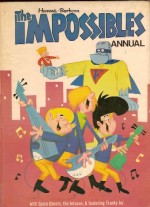
By various (Atlas Publishing & Distributing Co.)
No ISBN
British Comics have always fed from other media and as television grew during the 1960s – especially the area of children’s shows and cartoons – those programmes increasingly became a staple source for the Seasonal Annual market. There would be a profusion of stories and strips targeting not readers but young viewers and more and more often the stars would be American not British.
Much of this stuff wouldn’t even be as popular in the USA as here, so whatever comic licenses existed usually didn’t provide enough material to fill a hardback volume ranging anywhere from 64 to 160 pages. Thus many Annuals such as Champion the Wonder Horse or Lone Ranger and a host of others would require original material or as a last resort, similarly themed or related strips. The Impossibles Annual was one of these and used both solutions…
Frankenstein, Jr. and the Impossibles debuted in America in Fall 1966, an early entry in Hanna-Barbera’s line of spoof superheroes cartoons (preceded by Atom Ant and followed by the likes of Captain Caveman and Hong Kong Phooey) and led to a string of straight adventures heroes like Birdman, Johnny Quest and the magnificent Alex Toth-designed Space Ghost.
Frankenstein Jr. was an affable giant robot built by the rather recondite Professor Conroy who went crimefighting with his builder’s spunky son Buzz, whilst The Impossibles were a trio of superheroes who travelled the world defeating evil at the behest of their mysterious handler “Big Dâ€. Their cover was a pop group of the same name, and, since television and comics producers love to hedge their bets, Multi Man Fluid Man and Coil Man bore a more than coincidental resemblance to a certain band from Liverpool who were currently taking the world by storm…
The show ran for two seasons, but Hanna-Barbera’s comicbook connection Gold Key only ever released one issue of Frankenstein Jr. (which included an Impossibles back-up) and the contents of that are all included here, so the British publisher found themselves having to reprint other H-B adaptations as well as paying for new material – in the traditional form of text stories and features.
With typical British eccentricity the B-feature got top billing here so the titular stars don’t actually appear too often in this 64 page nostalgia goldmine, which opens with just such an illustrated prose story (sadly uncredited and anonymous). ‘The Impossibles Cure a Doctor’ is an impressively clever duel with a mad scientist, promptly followed by a Gold Key strip ‘The Impossibles vs. The Mirror-Man’ (probably drawn by unsung genius of cartoon comics Pete Alvarado – but I’m only guessing).
Next up is the first associative fill-in; one of two rewritten strips featuring future family The Jetsons. ‘Auto-Pappy’ (and the subsequent ‘How to Mine a Moon!’ might actually be The Rogue Robot and The Wild Moon Chase from #22 of their own Gold Key comic series, but again I’m positing not positive), after which Big Franky and little Buzz tackled ‘The Image Invasion’.
Next up is a stunning show-stealer from artist Dan Spiegle whose Space Ghost thriller ‘Zorak’s Revenge’ blew my mind over forty years ago and still does the business now. It originally appeared in a one-shot from Christmas of 1966 (cover-dated March 1967, because that’s the way the Americans did things). The all-out action against aliens and monsters is followed by another comedy romp when ‘Frankenstein Jr. Meets the Flea Man’ and that aforementioned Jetsons retread, after which a crossword featuring those fabulous future folks gives us all pause for thought.
The Impossibles Annual ends as it began with another prose piece, but one starring Franky and the boy Buzz as they faced ‘A Spook in his Wheel.’
A lost bauble probably only recalled by increasingly doddery dotards, this book is packed with solid family entertainment from simpler times – and possibly created for simpler kids – but I’d love to be proved wrong..
All other material ™ and © 1968 Hanna Barbera Productions Inc. The Jetsons ™ 1968 Screen Gems, Inc. All rights reserved.
Marvel Comic Annual 1969
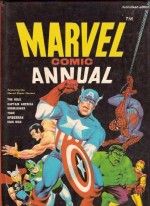
By various (World Distributors, Ltd.)
No ISBN
When Stan Lee rejuvenated the American comic-book industry in the early 1960s, his biggest advantage wasn’t the small but superb talent pool available, but rather a canny sense of marketing and promotion. DC, Dell/Gold Key and Charlton all had limited overseas licenses (usually in dedicated black-and-white anthologies liked the much beloved Alan Class Comics such as Suspense) but Lee – or his business managers – went further, sanctioning Marvel’s revolutionary early efforts in regular British weeklies like Pow!, Wham!, Smash! and even the venerable Eagle.
There were two wholly Marvel-ised papers, Fantastic! and Terrific! which ran from 1967 to 1968. These slick format comics featured a number of key Marvel properties, and, appearing every seven days, soon exhausted the back catalogue of the company.
After years of being a guest in other publications Marvel finally secured their own UK Annuals through the publishing arm of World Distributors and this sparkling collection is one of the very best. Completely gone are the text pieces, quizzes and game pages that filled out British Christmas books, replaced with cover-to-cover superhero action produced by the emergent House of Ideas at the very peak of their creative powers and even includes a few almost Golden Age classics. Moreover it’s in full colour throughout – almost unheard of at the time.
A closer look by Marvel scholars would ascertain that all of the strips published here were actually taken from the wonderful 25¢ giants (Marvel Tales, Marvel Collectors Item Classics and Marvel Superheroes) released during the previous year, perfectly portioned out to fit into a book intended for a primarily new and young audience.
Behind the delightful painted cover the enchantment commences with a John Romita drawn Captain America tale from 1954, as the Sentinel of Liberty and Bucky lay waste to a scurvy gang of Red Chinese dope smugglers in ‘Cargo of Death’, promptly followed by a spectacular Thor saga from Lee, Jack Kirby & Chic Stone as the Thunder God tackled ‘The Cobra and Mr. Hyde’ complete with cameo from the mighty Avengers.
The first of two Hulk shorts comes next, another commie-busting classic with science fiction overtones Lee, Kirby & Dick Ayers’s ‘The Gladiator from Outer Space’ is a terrific all-action mini-blockbuster, perfectly complimented by the superbly Lee & Steve Ditko sinister crime Shocker wherein Spider-Man finds himself trapped between ‘The Goblin and the Gangsters!’
Unsung genius Bill Everett provided two superb Sub-Mariner tales, both from the fabulous 1950s, and the secret origin saga ‘Wings on his Feet’ is the first and undeniable best of these, his magical line-work wonderfully enhanced by the bold colour palette and crisp heavy white paper of this comfortingly sturdy tome.
He is followed by a masterful clash of titans as ‘Iron Man Faces Hawkeye the Marksman’ by Lee & Don Heck, before ‘The Hulk Triumphant’ (concluding chapter of the very first appearance wherein the Green Goliath ended the menace of Soviet mutation The Gargoyle) and this Annual ends with an enthralling Everett Sub-Mariner epic as the Prince of Atlantis defeated mad scientists and monsters ‘On a Mission of Vengeance!’
These oft-reprinted tales have never looked better than on the 96 reassuringly solid pages here: bold heroes and dastardly villains running riot and forever changing the sensibilities of a staid nation’s unsuspecting children. Magic, utterly Marvellous Magic!
© 1969 Perfect Film & Chemical Corporation, Marvel Comics Group. All rights reserved.
The Dandy Book 1968
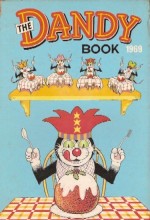
By various (D.C. Thomson & Co.)
No ISBN
For many British fans Christmas means The Beano Book (although Scots worldwide have a pretty fair claim that the season belongs to them with collections of The Broons and Oor Wullie making every December 25th magical) but I’ve done one of those so this year I’m concentrating on a another Thomson cracker that made me the man wot I am. As usual my knowledge of the creators involved is woefully inadequate but I’m going to hazard a few guesses in the hope that someone with better knowledge will correct me when I err.
The Dandy comic actually predated the Beano by eight months, completely revolutionising the way children’s publications looked and most importantly how they were read. Over the decades it too produced a bevy of household names that delighted generations and the end of year celebrations were bumper bonanzas of the comic’s weekly stars in brief and extended stories.
The action here begins on the inside front cover as seminal star Korky the Cat (by Charles Grigg?) got the ball rolling – wrapped up the show at the end – before unique cowboy superman Desperate Dan suffers a prank from his equally rambunctious nephew and niece which literally brings the house down and hard-pressed squaddie Corporal Clott (by Dennis the Menace originator Davy Law or possibly his successor David Sutherland) finds guard duty in the snow a little chilly, taking ludicrous steps to warm up. He was equally ill-considered in his other two appearances this year…
D.C. Thomson were extremely adept at combining anarchic, clownish comedy with solid fantasy adventure tales such as ‘The Island of Monsters’ (illustrated by Paddy Brennan or perhaps Ron Smith) a thrilling castaway yarn as two boys find themselves marooned on a tropical paradise where all the animals suddenly grow to incredible size. He/they might also be the artist on the other science fiction thriller in this volume. ‘Captain Whoosh’ was a jet-pack wearing thief constantly foiled by plucky paperboy Terry Ball who here foils the rocket rogue’s attempts to plunder Moortown’s extremely well-stocked Art Gallery and museum. These picture thrillers usually came in the old-fashioned captioned format, with blocks of typeset text rather than lettered word balloons.
These annuals were traditionally produced in the wonderful “half-colour†that many British publishers used to keep costs down whilst bringing a little spark into our drab and gloomy young lives. This was done by printing sections of the books with two plates, such as blue/Cyan and red/Magenta: The versatility and palette range this provided was astounding. Even now this technique screams “Holidays†to me and my contemporaries, and this volume uses the technique to stunning effect.
The Smasher was a lad from the same mould as Dennis the Menace and in the four episodes here (by Hugh Morren) he carves a characteristic swathe of anarchic destruction, whilst a great deal of material was based on school as seen by both teachers and pupils. ‘Greedy Pigg’ (by George Martin), featured a voracious teacher always attempting to confiscate and scoff his pupils snacks. He fails miserably three times in this book… After a giant rebus crossword quiz by Eric Roberts (or perhaps Tom Williams), Dan returns only to fall foul of tomato growers, whilst Korky accidentally talks himself into a duel and ends up soundly thrashed. The immortal cat fares far better in his spats with be-kilted Highland strongmen, a beach inspector and in an angling competition but comes painfully second to boxing organisers when he tries to view without paying…
There’s one more extra-long Desperate Dan tale (wherein he paints the town red, but not in a good or gentle way) at the end of the book, but before then the magnificent Eric Roberts does double-duty this year with five strips starring perennial bath-dodger Dirty Dick and an extended seasonal saga of Boarding School bright-spark Winker Watson, and still found time and energy to illustrate five giant puzzle-spreads, whilst the inevitable outcomes of the four clashes between Bully Beef and Chips (drawn by Jimmy Hughes) invariably found the underdog’s brain always trumps brutal brawn.
This book is not short on drama or comedy adventure either. ‘Spunky and his Spider’ is the delightful rustic tale of an affable, truanting kid and his devoted, amiable apple-loving, giant antediluvian arachnid by the fabulous Bill Holroyd, who also crafted a hilarious school Christmas party romp starring schoolboy Charley Brand and his robotic pal ‘Brassneck’ and a cheeky sci fi giggle-fest starring alien visitor ‘Super Sam’ and his humongous minder Big Boris on a fact-finding mission to a town near you… As with the thrillers these yarns also came typeset, allowing more of the fabulous artwork to shine through.
‘Randall’s Vandals’, by an artist I don’t recognise, is the story of a canny gamekeeper’s son seeing off a bunch of rowdy big city poachers and everybody’s favourite sheepdog Black Bob tugs at the heartstrings in the book’s only prose story as a wilful lad playing with fireworks renders the legendary Border Collie a (temporarily) ‘Blind Bob!‘ The beautiful illustrations are, as ever, by the great Jack Prout.
Stuffed with activity and gag-pages, and bursting with classic kid’s comedy and adventure this is a tremendously fun book, and even in the absence of the legendary creators such as Dudley Watkins, Leo Baxendale and Ken Reid, there’s still so much merriment on offer I can’t believe this book is over four decades old. If ever anything needed to be issued as commemorative collections it’s such D.C. Thomson annuals as this…
© 1968 D.C. Thomson & Co., Ltd. All rights reserved.





